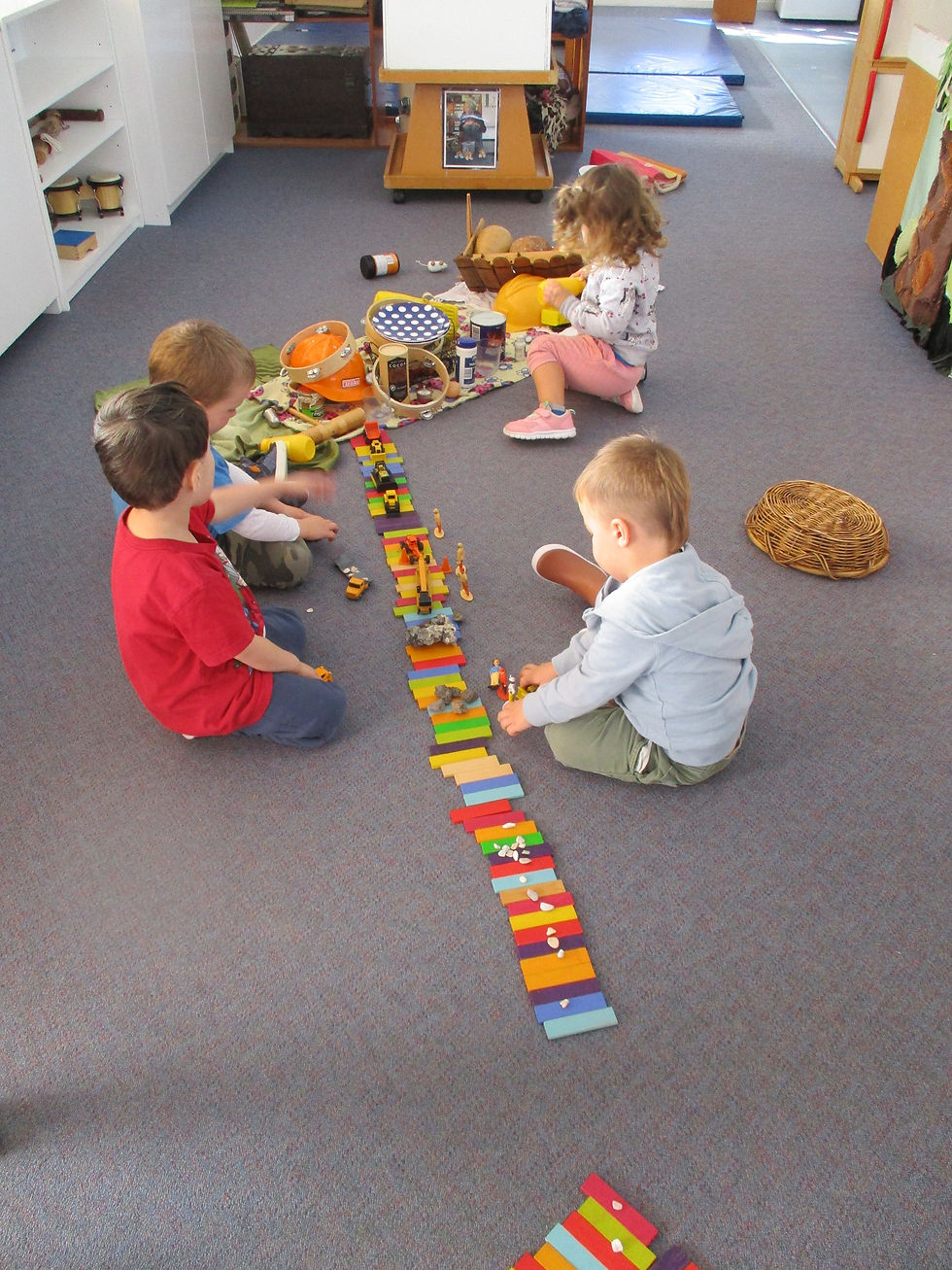Structured & Unstructured Play.
- manageroffice1
- Apr 4, 2024
- 3 min read
Updated: Aug 29, 2024
“Play is the work of childhood.” Jean Piaget
Structured Play & Unstructured Play - What's the difference & is one better than the other? Both types of play offer many benefits. Ideally, a child should have far more time designated to unstructured play daily than structured play. Here is why...
When a child is left to engage in unstructured play, it requires them to independently self-occupy, make decisions, navigate and regulate themselves, as well as imagine, explore, investigate, discover, and simply "figure it out", because this is an unplanned experience, your child can change and adapt which offers flexible thinking based upon their surrounding and materials.

Whereas structured play offers some amazing benefits, including following directions, comprehending rules, understanding order, turn-taking, as well as social interactions including collaboration and teamwork. Over-structuring a child's play can contribute to them becoming dependent on others direction and guidance on what to do and how to do it. It's hard to tap into creative and flexible thinking when someone has their experiences constantly mapped out for them.

Leaving downtime in the afternoon is important for a child, if there is too much structure (e.g. swim lessons, music lessons, tutoring, organised sports etc), it may come with pressure, expectations and disappointment, as the child can feel like they have to deliver something in a specific way. We may also be projecting what we feel a child should focus on and do, which can distract them from tapping into another area that may resonate better with their approaches to learning and/or personality.
Now again, structured play offers true benefits to development, and should be an aspect of a child's day-to-day. However, it can run into dangerous ground if it begins to dominate the child's day. Strive to ensure your child has several large blocks of authentic, unstructured, screen free, open-ended child-led play every day!
Stages of Play
We're often asked about what socialization and play should look like for children ages 0-5, so let's jump on in and look at the stages of play.
Play in the early years does not require as much social interaction as we may often think. For example, you may bring your toddler or young child to the park or to a music class, for example, and become concerned if they're not showing much interest in their peers. Good news is that this is totally developmentally appropriate!
Much of the child's first few years of life is really about experimentation, observations, and discovery. Babies, toddlers, and children want to get their hands and bodies on seemingly anything and everything to construct knowledge of the world around them. As they get older and connections in the brain solidify, they will begin branching out more-and-more, collaborating with peers for more organized and purposeful play.
Not only will age influence your child's stage of play - but so will their personality. You can have two children who are the same age, however, they may be in different stages of play based upon their unique approaches to learning. That does not suggest one stage of play is better or worse than the other, but rather, they're simply different - and our differences in what we do and how we do it makes the world a truly diverse and wonderful place.

Albert Einstein once said "The highest form of research is essentially play."
The 6 Stages of Play - Theory coined by Mildred Parten 1929.
Children may fall within 6 stages of play, including Unoccupied Play, Solitary Play, Onlooker Play, Parallel Play, Associative Play, & Cooperative Play.
Unoccupied Play
Typically ranges from 0-3 months old, in which babies do not demonstrate an objective in their play, and there is no social engagement with others.
Solitary Play
Typically ranges from 3 months - 2 years old, in which babies and toddlers play alone while focusing on their own task - not yet interested in play with others.
Onlooker Play
Typically ranges from 2 - 3 years old, in which toddlers begin showing interest in what others are playing with, and how they're playing with materials & people.
Parallel Play
Typically ranges from 2.5 - 4 years old, in which children play next to others with same materials and may begin copying what they observe their peers doing.
Associative Play
Typically ranges from 3 - 4.5 years old, in which children interact and play with each other, but play is not organized or coordinated among them.
Cooperative Play
Typically begins around 4.5+ years old, in which children are now working together in an organized group, establishing rules and goals for their play.
Source: www.weskoolhouse.com




Comments